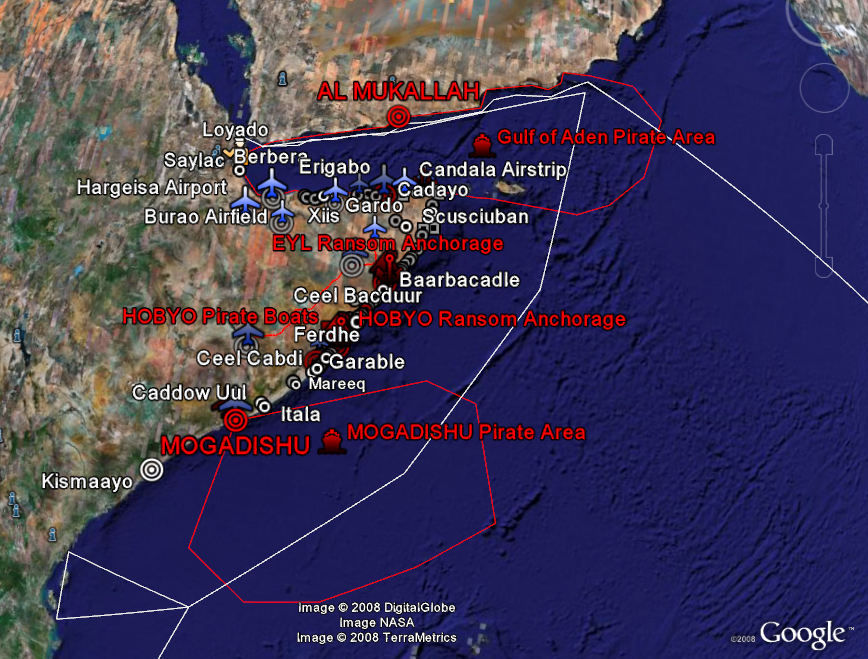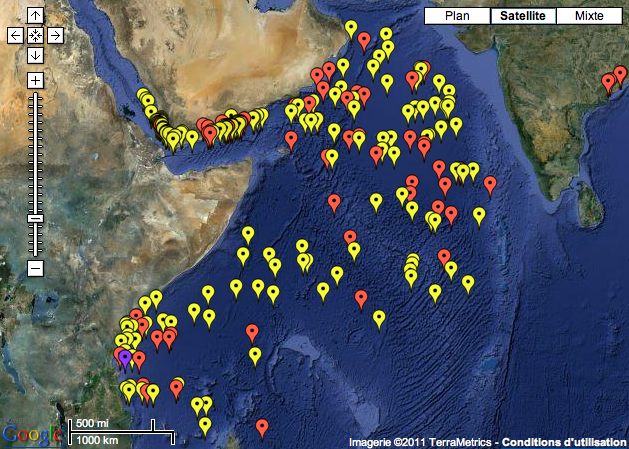Introduction
In the past few years, the problem of Somali piracy raised a number of questions, making people fear the cruel robbers and causing economic instability in a number of countries. Due to the actions undertaken internationally to eliminate the Somali threat, the piracy threat has been gradually reduced.
However, the economic misbalance within Somali remained on the same level, which can cause another outburst of violence from the local pirates.
However, it must be admitted that much has been done since the problem emerged. With help of the decisive actions of the people involved, and the international security system together with the action undertaken by volunteer peacemakers, the problem poses great threat no longer.
What must be considered at present is the state of affairs in the state of Somali, for further economical degradation might be the reason for another piracy threat.
Considering the articles discussed below, one can say that they suggest a lot of food for thoughts, enriching one with sufficient background knowledge on the subject and giving examples of what Somali piracy is. In addition, the articles analyzed below deal not only with the roots of the problem, but also with the means which have been used to tackle it, as well as the advantages and the disadvantages of the measures undertaken.
With help of these pieces, one can have clear idea of what Somali piracy is and what it has resulted in. In addition, the articles also give n insight on the relationships between the leading and the developing countries. Thus, the given articles shape the idea of the issue and contribute to a deeper understanding of the problem.
Assessing the Reasons for Piracy in Somali
The article which is dealing with the origins if Somali piracy and its reasons suggests another viewpoint to consider the problem from. With help of Robin Hunter’s article, it becomes obvious what exactly makes the Somali pirates commit crimes and rob the ships sailing by. As it has turned out, the reason for the sea piracy is old as the hills – the Somali pirates are looking for the so-called “easy money”.
It seems that this is a perfect example of the way in which time and space relationships between different countries can be traced clearly. It is evident that Somalia is distanced in both space and time from the European countries, since its economical and political systems are out of date and require considerable changes.
Such state of affairs predetermines the fact that the country must be suffering severe economical crisis, which results in inflation, lack of money and workplaces. Therefore, the country is wallowing in poverty, unable to sustain the life of the people living there.
Such conditions have predetermined Somalia piracy. With no hope of finding job to sustain their lives, people have resorted to the only possible means of surviving which they had at that moment. According to Susan Rice, ”Somalia’s long-standing poverty and instability have also fostered piracy, now well established in the major shipping routes off the Horn of Africa”.
Therefore, poverty is one of the core reasons which drove Somali to such means of making money. Explaining the true conditions which caused the Somali dwellers resort to crime, Hunter also makes it clear that such detail does not rehabilitate the pirates, but helps to understand the roots of the problem to fight it more efficiently.
It is clear that Hunter emphasizes the necessity to eliminate the cause of piracy first. However, the author must understand that the issues of national well-being cannot be solved in a blink of an eye.
With its insightful descriptions of Somali piracy and the reasons which led to it, Hunter makes it possible to take a look at the problem from a different angle. With help of this article, one can see clearly the division of identity between the European countries and Somali.
Relating to different worlds, Europe and Somali are unlikely to come to terms before Somali establishes stable economical position and starts the process of state policy renewal.
Considering the Court Verdicts
Another cause for concern was the way in which the Somali pirates were treated in courts. According to what Xan Rice says, the Somali pirates will not get the proper punishment for their actions due to high rates of corruption within the Malaysian judicial system. As long as the pirates are handed over to the Malaysian court, the process of fighting piracy in Somali will go over and over again.
Due to the fact that the Somali pirates bribe judges to avoid being imprisoned, they will continue their criminal actions and are likely to become even more aggressive. Therefore, the given article offers that sufficient changes should be made to the existing situation.
With help of Rice’s report, one can see the drawbacks of the existing judicial system in Somali, which not only leaves the pirates unpunished, but also encourages them on further crimes. There is no doubt that something has to be done about the existing situation, the author claims.
With help of Rice’s report, one can see the peculiarities of the geographical relations between the countries. What is illegal in Europe and America is treated in rather composed manner in Somali and Malaysia, which brings people to a culture clash. To avoid such problems, people have to make cultures merge and create certain law which will be efficient in all continents, Rice hints.
However, the author understands that the differences in the world picture are rather hard to overcome. Due to the different world vision of the countries, it becomes practically impossible to cope with piracy in Somalia, no matter how sad this might sound.
The Evaluation of the Changes
Despite the efforts which have been undertaken to improve the situation, the changes which have occurred already are not enough to make the world a safe place. According to news reports, piracy still takes place in the water area around Somali, which means that the piracy has not been eliminated.
In addition, the growing gap between the Malaysian and the European countries is well worth thorough considerations. Therefore, it is far too early to speak of any improvements. As Aust puts it,
Today piracy is a modern, and growing, phenomenon. Although the area of sea most threatened by pirates is Somalia, pirates have operated for many years (and still operate) in other waters, not just the Caribbean, as Hollywood might like us to believe.
It seems that the process of Somalia development has been hindered so hard that it is now almost impossible to cause any positive changes. The articles above make it clear that no further efforts can improve the conditions in which Somali is at present, as well as fight the terrorism of the Somali pirates.
Taking a closer look at the core of the problem, one can see clearly that the problem concerns the time and spatial gap between Europe and Malaysia. Living detached from the civilized countries, Somali is doomed to be stuck between poverty and piracy, if considering the statement made by Willinsky:
With Hegel’s theory of relativity, a large part of the globe does not participate in the progress of time experienced by the West, creating a differentiating time-space continuum that further ensures the lasting division of the world in the Western imagination.
Creating the “spatial matrix” which Fabian was speaking about, European countries refuse the admission of the Malaysian countries into the progressive world. Although Pickles claims that “there is a difficulty of mapping something that cannot be counted as singular but only as a mass of different and sometimes conflicting subject positions.
There is difficulty in mapping something that is always on the move, culturally, and in fact”, the piracy in Somalia still can be tracked. Looking at the maps dating 2008 and 2011, one will be able to see the level of piracy in the Somali area.

Comparing these data to the ones obtained in 2011, one can say with certainty that the progress in fighting piracy is quite hard to spot. Despite all the attempts to make piracy cease, it continues growing rapidly, and pirates start hunting not only cargo ships, but also the yachts of the civil citizen, which means that the pirates’ cruelty has reached its top. The map below shows that the areas where piracy flourishes have grown considerably larger.

Conclusion
Drawing the conclusions from the abovementioned, one can claim with certainty that the time and spatial boundaries between countries were predetermined by the differences in culture, development and the pace of progress in certain countries. Due to the fact that the process of development took various shapes in different countries, conflicts are unavoidable.
In addition, it is obvious that to eliminate piracy in Somalia, it is necessary to make the gap in time and space between the countries close. Since such actions are impossible at present, the rapid spreading of piracy can be hindered, but not eliminated. Though this might sound pessimistic, Somali piracy will cease only as the difference in time and space between Somalia and Europe is reduced to zero.
Bibliography
Aust, Anthony. Handbook of International Law. Cambridge: Cambridge University Press, 2010.
Fabian, Johannes. Time and Other: How Anthropology Makes its Object. Columbia, OH: Columbia University Press, 2002.
Pickles, John. A History of Spaces: Cartographic Reason, Mapping and the Geo Coded World. New York, NY: Routledge, 2004.
Rice, Susan et al. Confronting Poverty: Weak States and U. S. National Security. Washington, D. C.: Brookling Institution Press, 2010.
Willinsky, J. Learning to Divide the World: Education at Empires End. University of Minnesota Press, 1998.